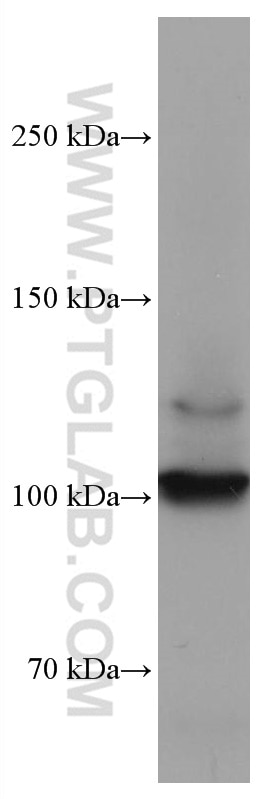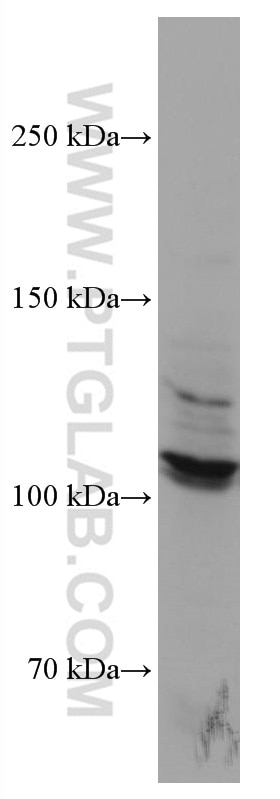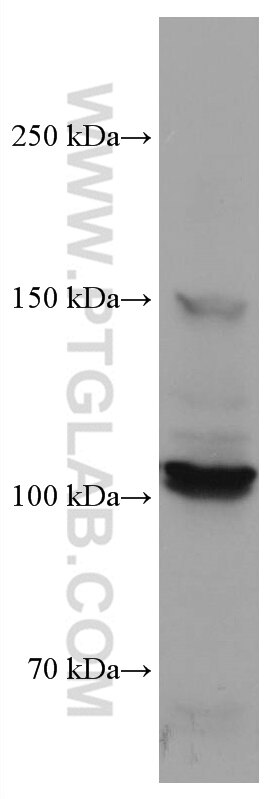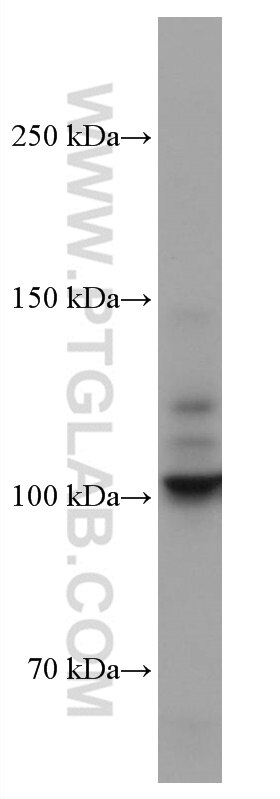Anticorps Monoclonal anti-DDR2
DDR2 Monoclonal Antibody for WB, ELISA
Hôte / Isotype
Mouse / IgG1
Réactivité testée
Humain
Applications
WB, IF, ELISA
Conjugaison
Non conjugué
CloneNo.
1E9A10
N° de cat : 67126-1-Ig
Synonymes
Galerie de données de validation
Applications testées
| Résultats positifs en WB | cellules Jurkat, cellules HEK-293, cellules HeLa, cellules HepG2 |
Dilution recommandée
| Application | Dilution |
|---|---|
| Western Blot (WB) | WB : 1:1000-1:6000 |
| It is recommended that this reagent should be titrated in each testing system to obtain optimal results. | |
| Sample-dependent, check data in validation data gallery | |
Applications publiées
| WB | See 1 publications below |
| IF | See 1 publications below |
Informations sur le produit
67126-1-Ig cible DDR2 dans les applications de WB, IF, ELISA et montre une réactivité avec des échantillons Humain
| Réactivité | Humain |
| Réactivité citée | Humain |
| Hôte / Isotype | Mouse / IgG1 |
| Clonalité | Monoclonal |
| Type | Anticorps |
| Immunogène | DDR2 Protéine recombinante Ag28340 |
| Nom complet | discoidin domain receptor tyrosine kinase 2 |
| Masse moléculaire calculée | 97 kDa |
| Poids moléculaire observé | 100-110 kDa |
| Numéro d’acquisition GenBank | NM_001014796 |
| Symbole du gène | DDR2 |
| Identification du gène (NCBI) | 4921 |
| Conjugaison | Non conjugué |
| Forme | Liquide |
| Méthode de purification | Purification par protéine G |
| Tampon de stockage | PBS with 0.02% sodium azide and 50% glycerol |
| Conditions de stockage | Stocker à -20°C. Stable pendant un an après l'expédition. L'aliquotage n'est pas nécessaire pour le stockage à -20oC Les 20ul contiennent 0,1% de BSA. |
Informations générales
DDR2 (Discoidin domain receptor 2) belongs to the receptor tyrosine kinase (RTK) family and is activated by collagen-binding.DDR2 is implicated in several physiological and pathological processes, including wound healing, angiogenesis, ovulation, spermatogenesis, extracellular matrix (ECM) remodeling and fibrosis, and tumor progression (PMID: 25805889). Moreover, DDR2 is prominently present in the fibroblasts, smooth muscle cells, myofibroblasts, and chondrocytes (PMID: 37834343).
Protocole
| Product Specific Protocols | |
|---|---|
| WB protocol for DDR2 antibody 67126-1-Ig | Download protocol |
| Standard Protocols | |
|---|---|
| Click here to view our Standard Protocols |
Publications
| Species | Application | Title |
|---|---|---|
J Cell Mol Med The role and mechanism of transforming growth factor beta 3 in human myocardial infarction-induced myocardial fibrosis. | ||
Int J Biol Macromol Human type III collagen-derived biomaterial with high antitumor activity inhibits breast cancer cell autophagy, proliferation, and migration through DDR1 |





